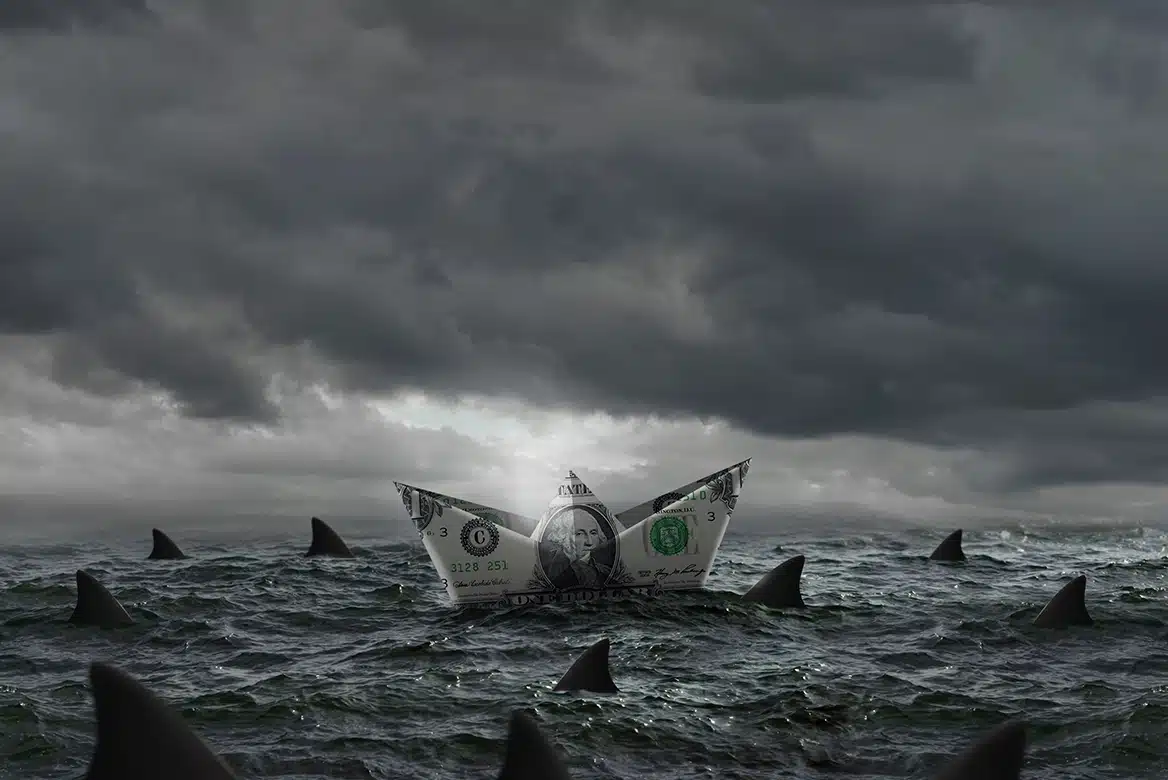On the 50th anniversary of Jaws, it’s only fitting that investors feel like they’re floating nervously in open water, scanning the horizon for something with sharp teeth. The Fed’s latest meeting was less of a lifeboat and more of a warning buoy: Inflation risks remain, policy direction is murky, and the currents are shifting. Cue the music; we’re gonna need a bigger boat.
Fog on the Water: Fed Holds, Powell Stares into the Tariff Abyss
The Fed kept rates steady, but not because all is calm beneath the surface. Chair Powell called the economic outlook “clouded by fog,” citing geopolitical tensions, new tariffs, and inflation volatility. The biggest bite? Tariffs are set to ripple through the price chain, with Powell warning: “Someone has to pay.” Whether it’s manufacturers, importers, or end consumers, those costs don’t just vanish. Powell emphasized that the Fed is “well positioned to wait,” as too much still remains uncertain.
Yet even as Powell doubled down on caution, Federal Reserve Governor Christopher Waller offered a counterpoint Friday. Waller said he doesn’t expect tariffs to boost inflation significantly and floated the possibility of a July rate cut. Waller is urging his Fed colleagues to “look through” the one-time bump in prices from tariffs and focus on the disinflation trend beneath.
The Disinflation Drift: Housing, Retail, and the Soft Undercurrent
Despite Powell’s hawkish lean, signs of disinflation are lurking just below the surface. Housing, a leading indicator with ripple effects across the economy, continues to lose steam. Monthly home values are falling in over half the country, builder sentiment is back near 2012 lows, and incentives are making a comeback. The boom locations of the pandemic era, like Florida and Texas, are watching prices flatten or fall. A 29.7% month-over-month drop in multifamily starts led to the 9.8% overall decline in housing starts, the lowest pace of apartment construction in six months.
Retail is also showing signs of disinflation. May saw a 0.9% decline in sales, worse than expected. Sure, the “control group” measure rose 0.4%, which strips out volatile components like autos and gas, but the broader message is clear: the consumer, long the stalwart swimmer keeping the economy afloat, is showing signs of fatigue.
Add in rising inventories, discounting pressure, and softening rent inflation, and the tide of disinflation becomes harder to ignore and may cushion the impact of tariffs.
Tariffs, Politics, and a Shifting Tide
Trump’s tariff policies are the whale in the room. April saw consumers front-load purchases in response to the April 2 announcement of broad tariffs, but the aftershock is now visible in the sales drop and sentiment wobble. Powell acknowledged the impact but made clear the Fed won’t preemptively accommodate political decisions with rate cuts. Still, the market’s betting on at least two cuts this year. Powell is paddling upstream against those expectations.
Geopolitical friction and domestic policy unpredictability further cloud the path forward. The escalation of Mid-East hostilities between Israel and Iran has potential to draw in the U.S. and become a broader conflict. U.S. oil prices have already risen in June and have reached a five-month high. There’s reason investors should be watchful: the boat’s not sinking, but the sonar’s pinging and nobody’s sure what’s swimming below.
For CRE Investors: Watch the Credit Currents
The commercial real estate market should pay close attention to the underlying economic riptides:
- Multifamily momentum is clearly slowing. Developers are pulling back, financing is tighter, and rental growth is no longer guaranteed. While construction costs remain sticky, exit valuations are slipping.
- Retail demand is softening but not collapsing. Urban core retail may see selective strength (especially experiential or service-led formats), but large-format and discretionary-focused centers will struggle as consumer caution rises.
- Office remains adrift. Fundamentals haven’t improved meaningfully, and rate stagnation will not be enough to reignite demand. Asset repricing continues, especially in non-core markets and assets with near-term rollover.
- Liquidity remains a shallow pool. Even with possible rate cuts in late Q3, lenders are still conservative. CRE debt markets are still pricing risk high, and refinancing pressures will escalate into 2026. Investors hoping for cap rate compression as a lifeline may be sorely disappointed.
This is no longer a market that rewards passive ownership or overleveraged optimism. Active asset management, creative leasing strategies, and disciplined capital stacks will separate survivors from the chum.
Final Word: Uncertainty is the Menace Beneath the Surface
For now, the Fed is anchored to a wait-and-see strategy. The Fed may be standing on the deck for now, but the water is choppy. Inflation risks, policy uncertainty, and geopolitical squalls are all circling. And just beneath the surface? Slowing housing, cautious consumers, and tightening CRE fundamentals.
As the Jaws hero Chief Brody said, staring down the great white: “You’re gonna need a bigger boat.”
Right now, so might investors as they navigate more uncertainty.
Subscribe to Insights to get updates on the market and CRE news.
